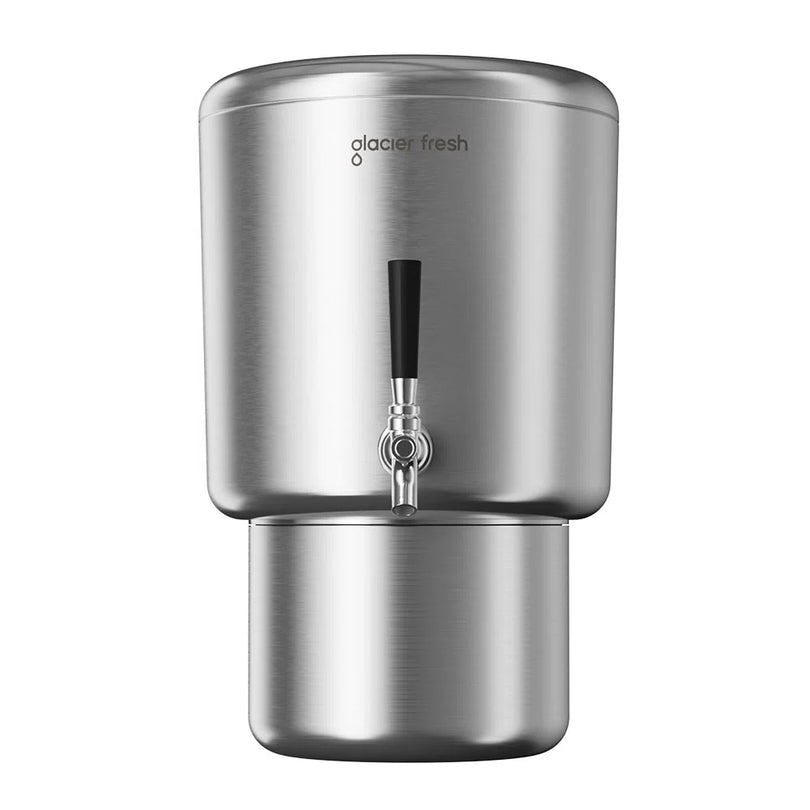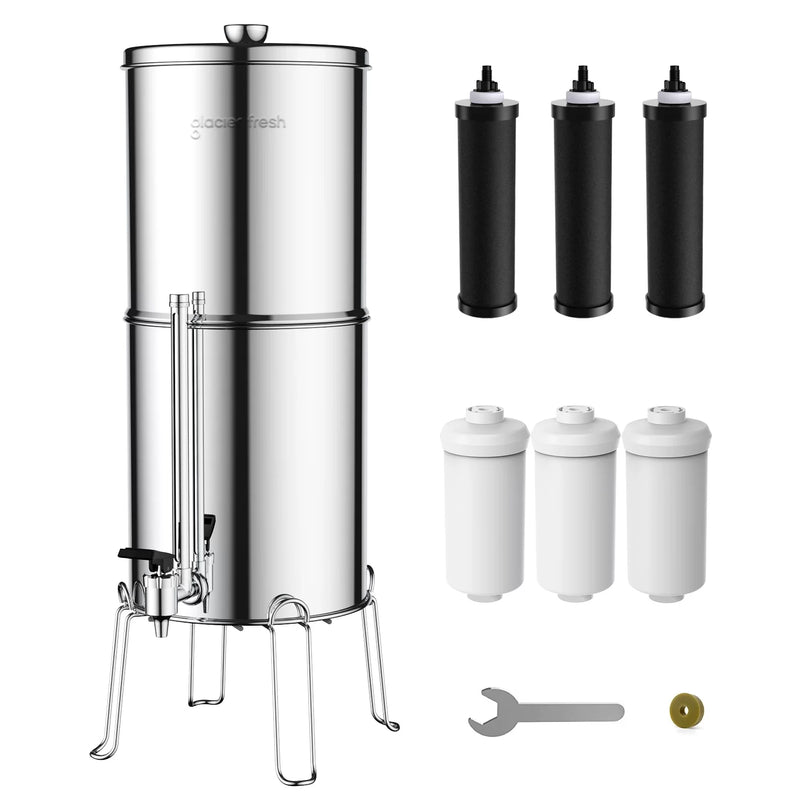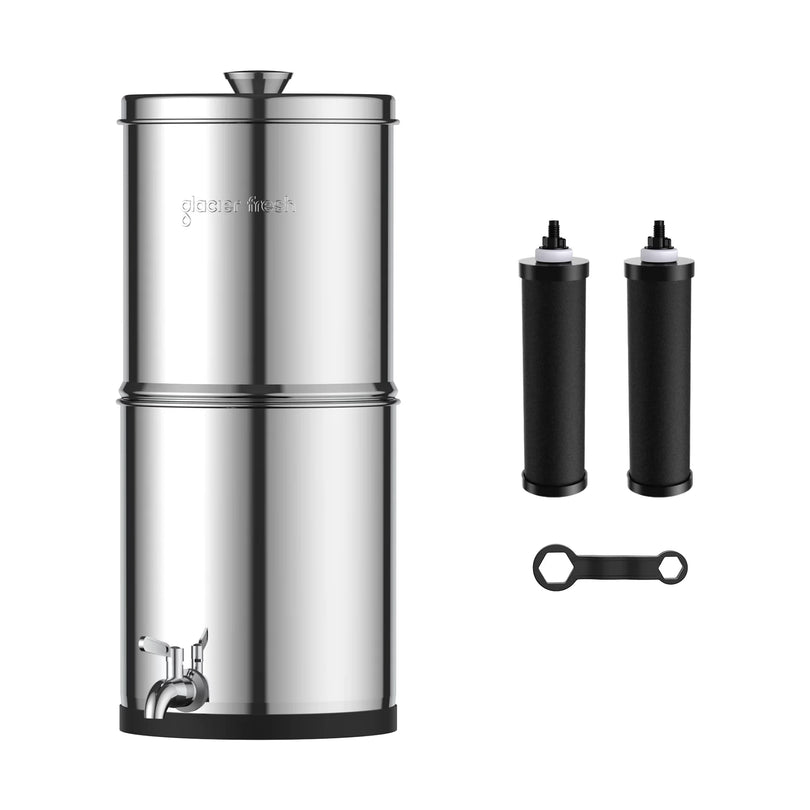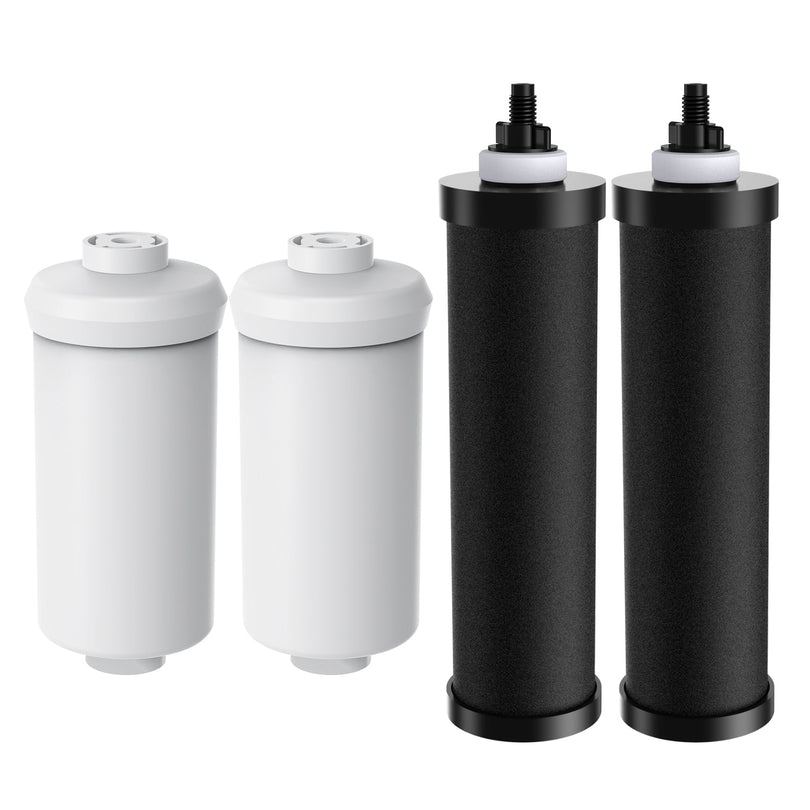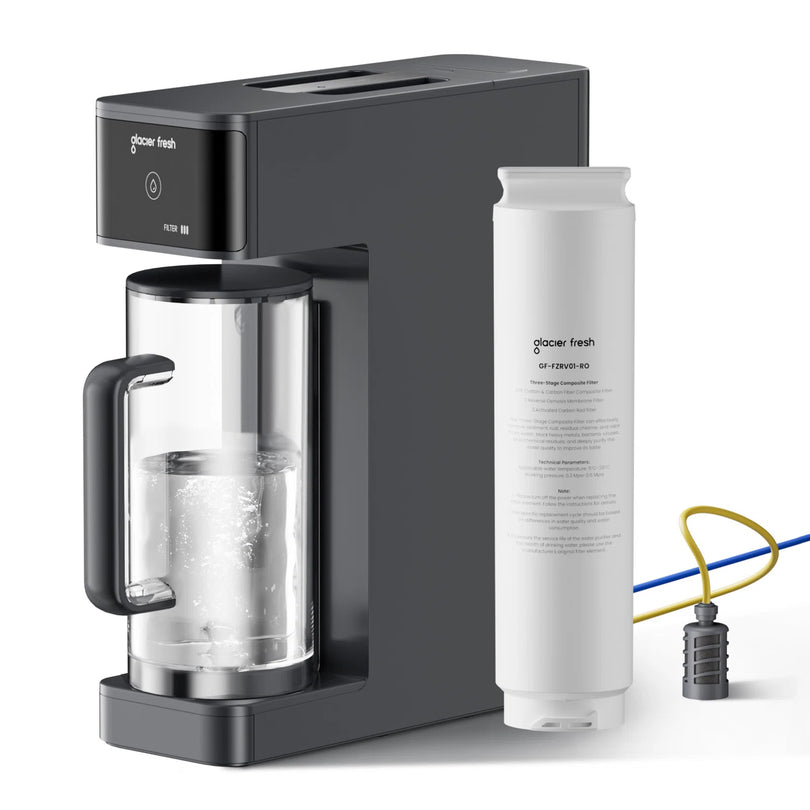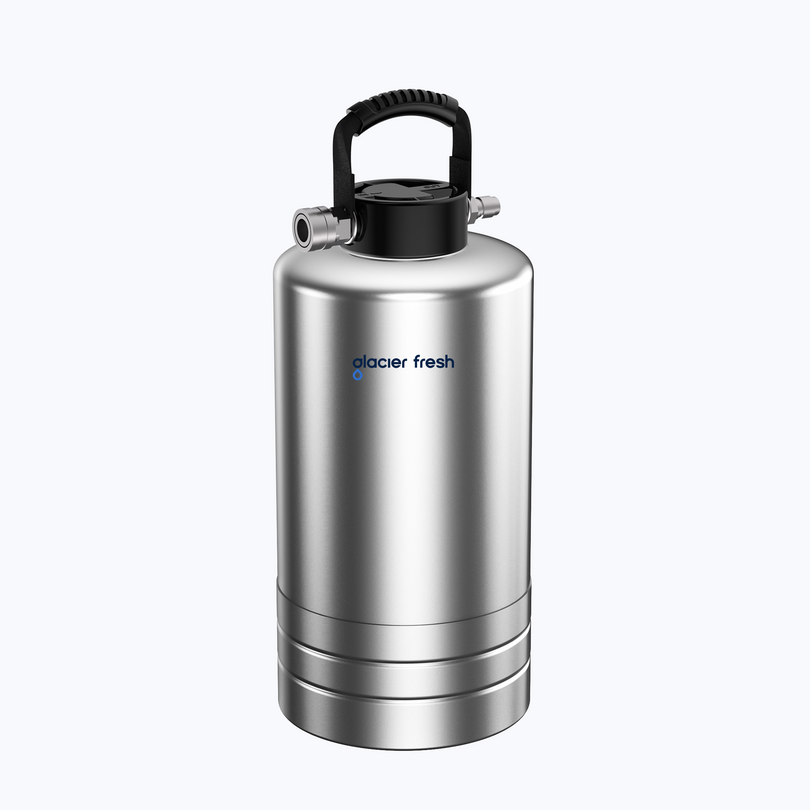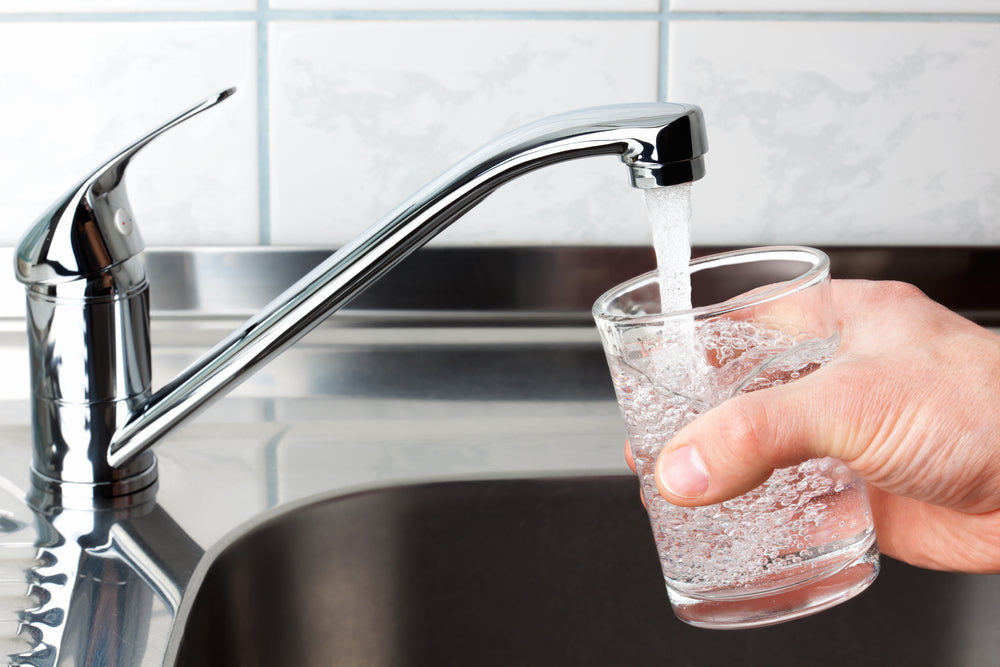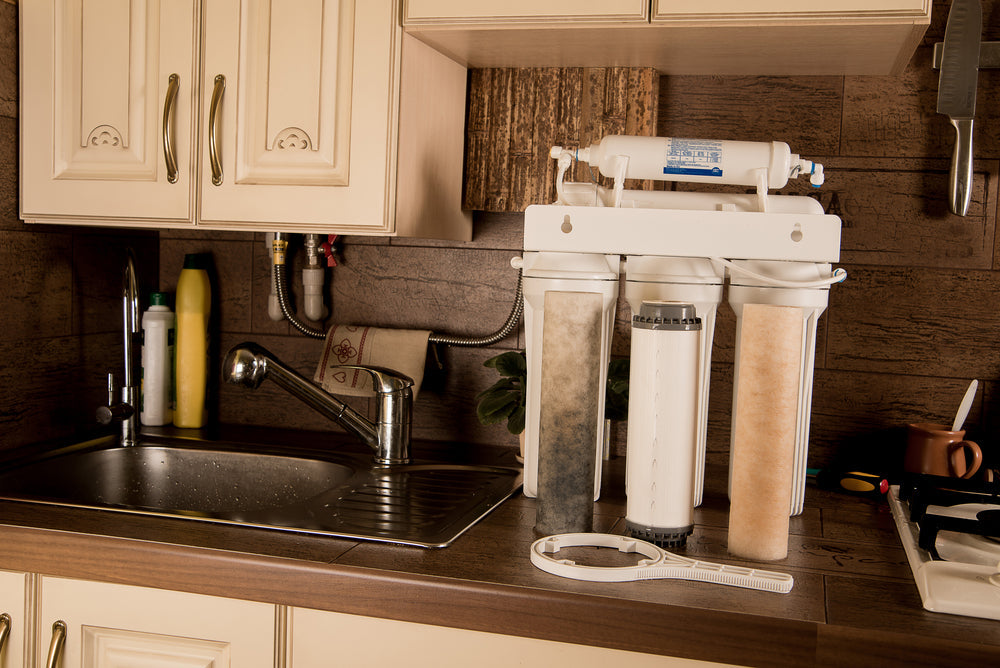Table of Contents:
The Water Situation by the Numbers
The Example of Flint
What’s in Your Drinking Water?
How Do I Know If My Water Is Safe?
Protecting Yourself from Contaminated Water
In 2019, the Guardian and Consumer Reports conducted a nine-month investigation that found “alarming levels of chemicals such as lead and arsenic” in tap water across the U.S. Other media reports referenced studies that question whether permitted elements in tap water such as fluoride could be harmful to specific groups of people.
Certain legitimate questions arise if you consider the conclusions from the Guardian and Consumer Reports investigations. How safe is tap water? Should I trust the authorities when they tell me that the water coming from the tap is safe? Can I do anything to protect myself from contaminated water? Could filters be the answer to the problem of contaminated water?
In this article, we answer these questions, hoping that by the time you get to the end of the article, you will have an idea of how you can ensure that you and your family are drinking safe water.
The Water Situation by the Numbers
For many people living in the United States and across the developed world, it’s easy to believe that everyone can easily access clean water. But billions around the world do not have such a privilege. For example, the World Health Organization reports that 2 billion people worldwide are forced to use sources of water contaminated with feces.
In many developing countries, reliable water sources are hard to find, even in critical places like healthcare facilities where clean water is of utmost importance. This is especially true in the least developed nations, where 22% of the healthcare facilities lack water services.
Unclean water is not just unsanitary—it is also deadly. About 1.8 million people die from diarrhea-related diseases like dysentery and cholera every year.
Even in developed countries like the United States, many people still lack safe drinking water. About 13% to 15% of Americans still rely on water from private wells. This means more than 50 million Americans are living on water that doesn’t meet the standards expected by the Safe Drinking Water Act.
According to some researchers, roughly 2 million people in the United States do not have access to running water or indoor plumbing.
From the numbers above, it can be concluded that lack of access to clean water is not the preserve of developing countries without the necessary infrastructure; it also affects those living in the developed world. However, the good news is that you can do a lot to protect yourself from consuming unsafe water.
The Example of Flint
The Flint Water Crisis that started in 2014 and lasted for 18 months until 2016 is a clear indication that we should not always trust local authorities when they assure us that the water in our taps is safe.
The Natural Resources Defense Council (NRDC) reports that when Flint, a city in Michigan, decided to save costs by switching the water supply from Detroit’s system to the Flint River, things didn’t go as expected. The same source reports that “Inadequate treatment and testing of the water resulted in a series of major water quality and health issues.”
Even after the Michigan state government officially declared Flint water safe, people continued to rely on bottled water for all daily needs. They could no longer trust the water flowing from their taps. The Flint Water Crisis is a wake-up call for all of us to pay attention to our water supplies and ask, “What is in my drinking water?”
What’s in Your Drinking Water?

Going back to elementary chemistry, water is made up of two molecules of hydrogen and one molecule of oxygen. But those elements exist both in clean and unclean water. What makes water clean is the absence of contaminants like lead, arsenic, fuels, pesticides, cleaning chemicals, and other harmful substances.
Water becomes even more beneficial when healthy levels of minerals like fluoride are present. Two out of every three local authorities in the United States use fluoride in their public water supply. According to the Centers for Disease Control and Prevention, “Drinking fluoridated water keeps teeth strong and reduces cavities (also called tooth decay) by about 25% in children and adults.”
Other minerals like iron, zinc, phosphorus, and potassium can also be found in drinking water. These minerals are also beneficial to the human body when they exist in controlled proportions.
Water Contaminants
About two million tons of sewage and other contaminants make their way into the world’s water every day. The list of water pollutants is inexhaustible. Some common water contaminants are lead, pathogens, arsenic, and nitrates. Even elements that are ordinarily good for water health, like fluoride and chlorine, can become dangerous if used excessively.
The CDC reports that “There are many sources of water contamination, including naturally occurring chemicals and minerals (for example, arsenic, radon, and uranium), local land-use practices (fertilizers, pesticides, and concentrated feeding operations), manufacturing processes, and sewer overflows or wastewater releases.”
Other common culprits in water contamination are radioactive pollutants, vinyl chlorides, perchlorate, atrazine, and even pharmaceutical products.
How Do I Know If My Water Is Safe?

If I can’t always trust the assurances from our local authorities that tap water is safe, then how do I know if my water is safe?
Government bodies regulate the quality of the water that gets into our homes. The information available from these bodies regarding the quality of tap water in a certain area can be trusted.
In the United States, the Environmental Protection Agency (EPA) ensures that public water sources in the U.S. are safe.
The Safe Drinking Water Act (SDWA), passed by Congress in 1974, ensures certain safety standards are met. The SDWA has been amended twice—once in 1986 and again in 1996—to include the protection of other water sources like lakes, springs, ground wells, reservoirs, and rivers.
ETR Laboratories, a company involved in water and environmental testing, lists some common signs showing that your drinking water may be contaminated:
- It has a cloudy appearance, i.e., it is not clear.
- It contains sediments large enough to be visible.
- It appears to have some color.
- There is an oily film floating on top of it.
- It emits some kind of odor, such as the smell of chlorine or the rotten-egg-like odor caused by sulfur.
- It has a funny taste. For example, a bitter or metallic taste.
- Your silverware (cutlery and utensils) begins to rust over time.
Protecting Yourself from Contaminated Water

Despite the best efforts by local authorities to ensure that the water in our taps is safe for drinking, it may not be in your best interest to rely solely on these sources of water. The Flint Water Crisis referred to above is a testament to the possible failings of even the best public instruments against water contamination.
Therefore, we all need to put measures in place to offer an added layer of security over the current public safety standards.
Are Water Filters the Answer?

The American website and provider of health information, Healthline.com, notes that “A good way to ensure you’re drinking clean water is by filtering it.”
Water filters are versatile purification tools that help sieve most sediments in water, ensuring only clean, particle-free water comes out of our faucets, pitchers, or dispensers.
Filters come in different forms to suit different needs. Some of the most common variations of water filters are carafe filters, faucet-mounted filters, countertop filters, plumbed-in filters, and point-of-entry filters.
Regarding whether water filters are the answer to the problem of contaminated tap water, the American publisher of health and wellness information and news, WebMD.com, concludes that they are. According to the site, “A Consumer Reports comparison of a wide range of commercially available water filters … revealed that most filters do a decent job of removing contaminants from tap water, assuming they are designed for this purpose.”
Use a Holistic Approach
Ensuring that the water you and your family consume is clean requires a holistic approach. This implies that you should consider different methods of purifying your water and see how they complement each other.
Other common and effective ways of purifying water include boiling, using UV light purifiers, and adding substances like chlorine and iodine. However, each of these methods solves the problem of contaminated water only to a certain degree. For example, boiling water will kill bacteria but will not take out particles like metals and traces of lead.
Similarly, chemicals like iodine and chlorine will kill pathogens but do not guarantee that your water is safe to drink because it could still have solid particles and harmful metals. The best precaution is to combine multiple water purification methods for the best results, with filtration being the most crucial part of this setup.
Protecting yourself from the dangers of contaminated water is a full-time job. Depending on where you live, you probably already have access to treated water. However, treated water may still be compromised as it transits from the water corporations to your taps at home.
The primary contaminants here are usually small particles and sediments the water picks up on its path. Filters ensure that those particles are removed just before the water is consumed.





